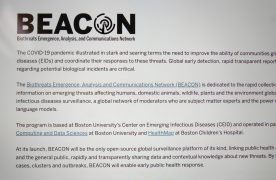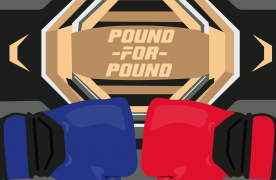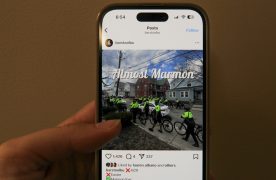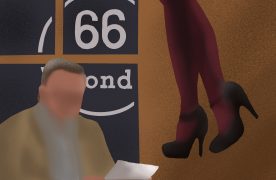Whenever I type, Cambria is my font of choice. It’s not the sturdy appearance of the letters that makes me swoon — but the fact that my eyes can actually read it without me hunching over at my desk with my face two inches away from the screen. A slight exaggeration, but you get the point.
As I’m sitting here typing, I’m not ashamed to admit that I keep changing the font between Cambria and Times New Roman to see if my opinion has changed. And the tribe has spoken — Cambria is still the best.
Well, according to a 14-year-old, both fonts are inferior. In fact, Garamond is the font that should reign supreme.
That’s a shocker. I was expecting him to say Windings.
Suvir Mirchandani won his school’s science fair with a revolutionary idea. He tried to find ways to save ink, paper and cold hard cash after noticing how much paper and ink his middle school used.
Mirchandani calculated that the state government could save a combined total of $370 million by switching their default font to Garamond. This font squeezes the letters like a can of sardines, producing a paper with too many words clustered together for the human mind to comfortably process. It’s a good thing that letters don’t have claustrophobia.
Can you read this?
Well, of course you can read it. But if you’re like me, you probably have horrendous eyesight and your eyes cringe at the sight of it. A textbook written entirely in that font would be my worst nightmare.
Back when I was 14, I still thought that making a tornado in two soda bottles taped together was cool. Perhaps, we have the looming age of technology to blame for that — or to thank.
Mirchandani is the perfect example of an extremely intelligent individual taking on an interdisciplinary approach, combining his knowledge of computer science and sustainability. And, for that, his effort should be applauded. His findings concluded that it’s not about making things double sided to save paper — it’s all about the ink.
“Ink is two times more expensive than French perfume by volume,” Mirchandani sprightly said in an interview with CNN.
It’s funny how that sentence in the interview with him stuck out to me the most. I suppose it’s because it makes you realize how much ink actually costs. So, lay off the Chanel No. 5 and dab yourself with a little ink before your romantic date. People are all about having expensive taste.
The great thing about Mirchandani’s approach is that he didn’t make it all about saving paper. But instead, he also made it about saving money. While I’m a strong supporter of all things sustainable, I realize that people aren’t convinced by “you should print less because it saves the planet.”
But with his approach, it makes you stop and think that we can have the capacity to make the Earth a little better with a simple click of a button. But maybe the solution isn’t as simple as clicking Garamond.
Jennifer Ruth is a College of Arts and Sciences junior. She can be reached at jenruth@bu.edu.
This is an account occasionally used by the Daily Free Press editors to post archived posts from previous iterations of the site or otherwise for special circumstance publications. See authorship info on the byline at the top of the page.












